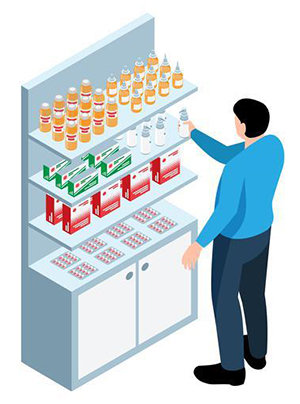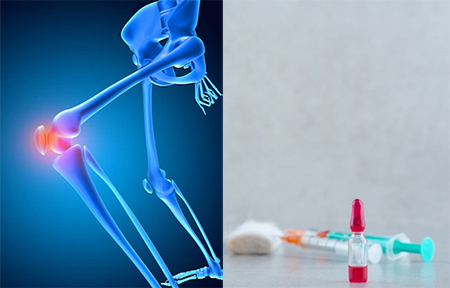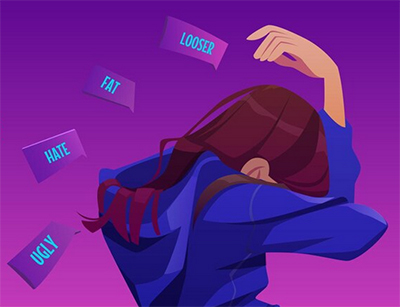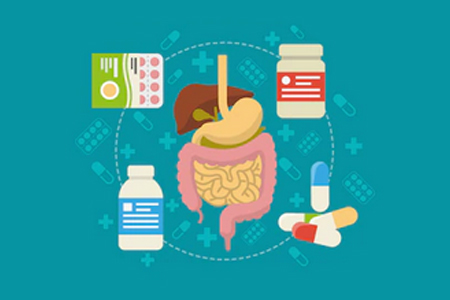
Introduction to pharmacology for Quebec Naturopaths
Click on the following to go directly to the section.
MULTIPLE DRUG CLASSIFICATION SCHEMES

Drugs can be classified by their chemical properties, usually being small molecules, natural proteins or peptides. Under another scheme, there are three major categories, which are: hallucinogens, stimulants, and depressants. The key idea is that drugs can be sorted and classified with multiple schemes.
Under yet another scheme, such as in the United States, drugs are classified into five schedules under the Controlled Substances Act (CSA):
- Schedule I : These are drugs that have a high potential for abuse, no currently accepted medical use, and a lack of accepted safety for use under medical supervision. Examples include heroin, LSD, and marijuana.
- Schedule II : These are drugs that have a high potential for abuse, a currently accepted medical use, and severe restrictions on their use due to the risk of abuse and dependence. Examples include cocaine, fentanyl, and Oxycodone.
- Schedule III : These are drugs that have a lower potential for abuse than Schedule I and Schedule II drugs, a currently accepted medical use, and a moderate to low risk of physical and psychological dependence. Examples include anabolic steroids and codeine.
- Schedule IV : These are drugs that have a lower potential for abuse than Schedule III drugs, a currently accepted medical use, and a limited risk of physical and psychological dependence. Examples include Xanax, Ativan, and Valium.
- Schedule V : These are drugs that have the lowest potential for abuse and a currently accepted medical use, and a limited risk of physical and psychological dependence. Examples include cough medicines with small amounts of codeine.
ANTI-ANXIETY DRUGS AND SEDATIVES
Sedatives is a close (though not perfect) synonym of antianxiety drugs, also known as anxiolytics. These are medications that are used to treat symptoms of anxiety. These drugs work by altering the levels of certain neurotransmitters in the brain, which can help to reduce feelings of tension, worry, and fear. Examples of antianxiety drugs include benzodiazepines (such as diazepam, alprazolam, and lorazepam), selective serotonin reuptake inhibitors (SSRIs), and beta blockers. Antianxiety drugs have side effects, of course.

10 Common Antianxiety Drugs
1. Benzodiazepines (such as diazepam, alprazolam, lorazepam)
2. Selective serotonin reuptake inhibitors (SSRIs) (such as fluoxetine, sertraline, paroxetine)
3. Buspirone
4. Beta blockers (such as propranolol)
5. Tricyclic antidepressants (such as imipramine, amitriptyline)
6. Hydroxyzine
7. Gabapentinoids (such as pregabalin)
8. Trazodone
9. Mirtazapine
10. Vortioxetine
Short- and long-term effects
The short-term effects of antianxiety drugs can vary depending on the specific drug and the individual taking it. In general, these drugs can help to reduce symptoms of anxiety such as worry, tension, and fear, as well as physical symptoms such as muscle tension, rapid heartbeat, and sweating. They can also help to improve sleep and concentration, and overall quality of life. However, short-term side effects can also occur with the use of antianxiety drugs.
These can include drowsiness, dizziness, and impaired coordination, which can increase the risk of falls and accidents. Some antianxiety drugs can also cause dry mouth, constipation, and blurred vision. And, as these drugs can cause sedation, they should be used with caution in people with a history of sleep apnea. Long-term effects of antianxiety drugs depend on the specific drug, the duration of use, and the individual’s vitality (age, body build, weight, state of general health, genetics, etc.) taking it.
Some long-term side effects can include:
- Tolerance: The need to take higher doses of the drug to achieve the same effect.
- Dependence: Physical dependence can occur when the drug is stopped abruptly which can lead to withdrawal symptoms.
- Cognitive and memory impairment: Long-term use of some antianxiety drugs may lead to memory impairment or cognitive impairment.
- Other side effects: Long-term use of antianxiety drugs may also lead to other side effects such as sexual dysfunction, weight gain, and increased risk of falls.
Dependence, addiction, and withdrawal
Some antianxiety medications, particularly benzodiazepines, can lead to physical dependence and withdrawal symptoms if they are stopped abruptly.
This is because these drugs work by increasing the activity of certain neurotransmitters in the brain, which can lead to changes in the way the brain functions over time.
When a person becomes dependent on these drugs, they may experience withdrawal symptoms such as anxiety, insomnia, tremors, seizures, and irritability, when they try to stop taking them.
Withdrawal symptoms can be severe and even life-threatening in some cases. Addiction is a complex phenomenon that can occur with long-term use of antianxiety medications, again particularly benzodiazepines.
Addiction involves compulsive drug-seeking behavior, despite the negative consequences it may have on an individual’s life.
It’s important to note that addiction is not only physical but also psychological, and it’s characterized by an intense craving for the drug, and difficulty to stop using it.
It’s important to note that not everyone who takes antianxiety medication will become dependent or addicted to it, but people with a history of substance use disorder are at a higher risk.
Natural Alternatives To Anxiety Drugs
There are several natural alternatives to antianxiety drugs that may help to reduce symptoms of anxiety.
Exercise: Regular physical activity can help to reduce symptoms of anxiety and improve overall mental health.
Relaxation techniques: Techniques such as deep breathing, meditation, and yoga can help to calm the mind and reduce feelings of tension and worry.
Herbal supplements: Some herbs, such as passionflower, kava, and valerian root, have been traditionally used to treat anxiety. However, it’s important to be aware that some of these herbs can interact with other medications and have side effects, so it’s important to consult with your doctor before taking them.
Therapy: mindfulness-based therapies can help individuals to learn coping mechanisms to deal with their anxiety and change negative thoughts and behaviors.
Acupressure, from traditional Chinese medicine, involves the use of thumb pressure at specific points on the body, where meridians are. Studies have shown that acupressure massage, reflexology and other types of bodywork including healing touch and energetic-based table bodywork may be effective in reducing symptoms of anxiety. A key consideration is teaching the client a short routine for self-administration of foot or hand reflexology, for example, combined with breathing.
Diet and Nutrients: a naturopath may recommend a diet that is rich in whole foods, and essential vitamins and minerals such as vitamin B, magnesium, omega-3 fatty acids and probiotics, as well as avoiding processed foods, caffeine, and alcohol.
Tools for effective time management and addressing any underlying emotional issues can also contribute to managing anxiety.
It’s important to note that these natural alternatives may not work for everyone, and some people may still need to take antianxiety drugs. Additionally, it’s important to consult a healthcare professional before trying any alternative treatment, as some of them may interact with other medications and have side effects, which the Quebec Naturopath is not trained to use or consider.
ANTIHISTAMINES

There are two main types of antihistamines:
- First-generation antihistamines : These are older antihistamines that are available over-the-counter and by prescription. Examples include diphenhydramine (Benadryl) and chlorpheniramine (Chlor-Trimeton). These antihistamines can cause drowsiness, dry mouth and blurred vision.
- Second-generation antihistamines : These are newer antihistamines that are available over-the-counter and by prescription. Examples include loratadine (Claritin), cetirizine (Zyrtec), and fexofenadine (Allegra). These antihistamines are less likely to cause drowsiness and other side effects, but they can still cause dry mouth, blurred vision and other side effects.
Antihistamines are medications that block the action of histamine, a chemical that is produced by the body as part of an allergic reaction. Histamine can cause symptoms such as itching, sneezing, runny nose, and watery eyes.
Antihistamines can help to relieve these symptoms by preventing histamine from binding to receptors in the body. Antihistamines are commonly used to treat allergies, hay fever, and hives, but they may also be used to treat symptoms of colds, and some other conditions such as motion sickness, insomnia, and anxiety.
It’s important to note that antihistamines should be used only under the guidance of a doctor, not a Quebec naturopath. In Quebec pharmacies, clients get in fact obtain free advice from a registered and licensed pharmacist for over-the-counter products available in the pharmacy.
10 Common Antihistamine Drugs
| Loratadine (Claritin) |
Cetirizine (Zyrtec) |
Fexofenadine (Allegra) |
Diphenhydramine (Benadryl) |
| Chlorpheniramine (Chlor-Trimeton) |
Cymemazine (Polaramine) |
Desloratadine (Clarinex) |
Levocetirizine (Xyzal) |
| Azelastine(Astelin) | Ebastine (Kestine) | ||
Short and long term effects
The short-term effects of taking antihistamines can vary depending on the specific drug and the individual taking it. They can include drowsiness, dry mouth, and impaired coordination, which can increase the risk of falls and accidents. Some antihistamines can also cause blurred vision, constipation, and urinary retention. Long-term effects of antihistamines also depend on the specific drug, the duration of use, and the vitality of individual taking it.
Some long-term side effects can include:
- Tolerance : The need to take higher doses of the drug to achieve the same effect.
- Cognitive and memory impairment : Long-term use of some antihistamines may lead to memory impairment or cognitive impairment.
- Other side effects : Long-term use of antihistamines may also lead to other side effects such as dry mouth, constipation, urinary retention and sexual dysfunction, that may not necessarily manifest themselves in the short-term.
- Antihistamines can also interact with other medications, such as antidepressants, and can have additive sedative effects.
Dependence, addiction, and withdrawal
Antihistamines are not considered to be addictive in the traditional sense of the word. Addiction is a complex phenomenon that involves compulsive drug-seeking behavior and difficulty in stopping the drug despite negative consequences.
Antihistamines do not produce the intense euphoria or rush associated with recreational drugs use or abuse, and people do not typically crave them or experience withdrawal symptoms when they stop taking them.
However, it’s important to note that long-term use of antihistamines may lead to physical dependence, and withdrawal symptoms may occur when they are stopped abruptly.
This is because these drugs can change the way the brain functions over time, as well as impact anabolic and catabolic metabolic pathways, so stopping them abruptly can cause symptoms such as insomnia, anxiety and irritability.
It’s important to note that long-term use of antihistamines should be under the guidance of a doctor, not a Quebec Naturopath.
Antihistamines can cause a range of side effects, some of which can be dangerous or lead to health problems.
- Drowsiness: Antihistamines can cause drowsiness, which can increase the risk of accidents, especially when driving or operating heavy machinery.
- Impaired coordination: Antihistamines can cause impaired coordination, which can increase the risk of falls and accidents.
- Dry mouth: Antihistamines can cause dry mouth, which can lead to tooth decay, and other oral health problems.
- Constipation: Antihistamines can cause constipation, which can lead to discomfort and stomach pain.
- Urinary retention: Antihistamines can cause urinary retention, which can lead to bladder problems.
- Blurred vision: Antihistamines can cause blurred vision, which can make it difficult to see and increase the risk of accidents.
- Cognitive and memory impairment: Long-term use of some antihistamines may lead to memory impairment or cognitive impairment.
- Interactions with other medications: Antihistamines can interact with other medications, such as antidepressants, and can have additive sedative effects.
It’s important to note that these natural alternatives may not work for everyone, and some people may still need to take antihistamines. Additionally, it’s important to consult a medical doctor as some of them may interact with other medications by increasing or decreasing their therapeutic effects.
Natural alternatives to antihistamines
There are several natural alternatives to antihistamines that may help to reduce symptoms of allergies and other conditions. These include potential tips or advice within the naturopath toolkit:
- Diet changes: Avoiding foods that are known to cause allergies or sensitivities, such as dairy, gluten, and soy, can help to reduce symptoms.
- Local honey: Consuming locally sourced honey can help to build up a tolerance to the pollens in your area.
- Quercetin: This is a natural bioflavonoid that has antioxidant and anti-inflammatory properties and can help to reduce symptoms of allergies. It is found in fruits and vegetables, red onions, kale.
- Vitamin C: Vitamin C is known to have anti-histamine properties and can help to reduce symptoms of allergies.
- Probiotics: Probiotics can help to reduce inflammation in the gut, which can help to reduce symptoms of allergies.
- Bromelain: This is an enzyme found in pineapples, which can help to reduce inflammation and improve symptoms of allergies. Avocados, bananas
- Butterbur: This is an herb that can help to reduce symptoms of allergies such as sneezing and runny nose.This would only be appropriate if the naturopath has also studied phytotherapy.
- Stinging nettle: This is an herb that can help to reduce symptoms of allergies, especially hay fever. This would only be appropriate if the naturopath has also studied phytotherapy.
ANTI-INFLAMMATORY
Anti-inflammatory medications are drugs that are used to reduce inflammation in the body. Inflammation is a natural response to injury or infection, but it can also contribute to a variety of chronic diseases such as arthritis, asthma, and heart disease. Anti-inflammatory drugs work by blocking the action of certain molecules that are involved in the inflammatory process. In blood work, C-reactive protein (CRP), fasting insulin and hemoglobin A1c (HbA1c) are three commonly related tests.

There are several types of anti-inflammatory drugs, including:
- NSAIDs.
Non-steroidal anti-inflammatory drugs: These are the most commonly used anti-inflammatory drugs, and include over-the-counter medications such as ibuprofen (Advil, Motrin) and naproxen (Aleve) as well as prescription drugs such as celecoxib (Celebrex) and diclofenac (Voltaren). - Steroids.
Steroid drugs, also known as corticosteroids, mimic the effects of hormones produced by the adrenal glands. They are often used to reduce inflammation in conditions such as asthma, rheumatoid arthritis, and lupus. Examples include prednisone and methylprednisolone. - DMARDs.
Disease-modifying anti-rheumatic drugs. These drugs are used to treat rheumatoid arthritis and other inflammatory conditions, and they are typically prescribed when other anti-inflammatory drugs have not been effective. Examples include methotrexate, leflunomide, and sulfasalazine. - Biologic Drugs.
These are a newer class of drugs that target specific molecules involved in the inflammatory process. Examples include adalimumab (Humira), etanercept (Enbrel), and infliximab (Remicade).
Commonly used anti-inflammatory drugs
Here is a list of the top 10 most commonly used anti-inflammatory drugs:
1. Ibuprofen (Advil, Motrin)
2. Naproxen (Aleve)
3. Acetaminophen (Tylenol)
4. Aspirin
5. Celecoxib (Celebrex)
6. Diclofenac (Voltaren)
7. Meloxicam (Mobic)
8. Indomethacin (Indocin)
It’s important to note that this list is not exhaustive, and other anti-inflammatory drugs may also be used to treat a wide variety of conditions. Additionally, there is no choice but consult a medical doctor for a prescription-drug, which may have side effects and interact with other medications. Some anti-inflammatory drugs can be obtained only by prescription, and some over-the-counter anti-inflammatory drugs have a maximum daily dosage, and should not be used for long-term or without medical supervision.
Common over-the counter anti-inflammatory supplements include:
- Fish Oil: Omega-3 fatty acids found in fish oil supplements have anti-inflammatory properties.
- Turmeric: The active ingredient curcumin in turmeric is known to have anti-inflammatory effects.
- Bromelain: This enzyme found in pineapples is believed to have anti-inflammatory properties.
- Glucosamine and Chondroitin: These supplements are commonly used to relieve pain and inflammation in people with osteoarthritis. They can be found at Costco.
- Ginger: The active ingredient gingerol in ginger is known to have anti-inflammatory properties.
- Quercetin: This is a natural bioflavonoid that has antioxidant and anti-inflammatory properties.
- Boswellia: This is an herb that has been used to treat inflammation and pain associated with conditions such as osteoarthritis and rheumatoid arthritis.
- Devil’s Claw: This is an herb that is commonly used to relieve pain and inflammation associated with conditions such as osteoarthritis and rheumatoid arthritis.
- Nettle: This herb is known to have anti-inflammatory properties and is commonly used to relieve pain associated with conditions such as osteoarthritis and rheumatoid arthritis.
- White Willow Bark: This herb contains salicin, which is similar to the active ingredient in aspirin, and is used for pain and inflammation relief.
Aspirin, Tylenol (acetaminophen), and ibuprofen are all common over-the-counter medications that are used to relieve pain and reduce inflammation.
Short-term effects:
- Pain relief.
- Reduction of fever.
- Relief of symptoms of inflammation.
- Ibuprofen and aspirin also have the ability to reduce the risk of blood clots and heart attacks when taken in low doses as directed by a healthcare professional.
However, short-term side effects can also occur with the use of these drugs
These can include:
- Stomach upset, nausea, and diarrhea.
- Increased risk of bleeding, especially when taken with blood-thinning medications such as warfarin or clopidogrel.
- Increased risk of kidney damage when taken in high doses or for long periods of time.
- Risk of liver damage when taking excessive doses of Tylenol.
Long-term effects:
- Regular use of aspirin, Tylenol or ibuprofen can lead to stomach problems such as stomach ulcers, bleeding and intestinal issues.
- Long-term use of ibuprofen and aspirin can increase the risk of kidney damage, heart attack and stroke.
- Long-term use of Tylenol may lead to liver damage, this is specially true when taking high doses of Tylenol.
- Regular use of these medications can also lead to the development of tolerance, which means that you will need to take more of the medication to achieve the same effect.
| MEDICATION | ACTIVE INGREDIENT | HOW IT WORKS | USES | SIDE EFFECTS |
| Aspirin | Acetylsalicylic acid | Inhibits the production of prostaglandins, which are chemicals that cause inflammation, pain, and fever. | Pain relief, fever reduction, reduction of the risk of blood clots and heart attacks (when taken in low doses under the guidance of a healthcare professional) | Stomach upset, bleeding, kidney damage with long-term use |
| Tylenol (Acetaminophen) | Acetaminophen | Blocks the production of prostaglandins in the central nervous system, reducing pain and fever. | Pain relief, fever reduction | Liver damage with excessive use |
| Ibuprofen | Ibuprofen | Inhibits the production of prostaglandins, which are chemicals that cause inflammation, pain, and fever. | Pain relief, fever reduction, relief of symptoms of inflammation | Stomach upset, bleeding, kidney damage with long-term use |
| Naproxen (Aleve) | Naproxen | Inhibits the production of prostaglandins, which are chemicals that cause inflammation, pain, and fever. | Pain relief, fever reduction, relief of symptoms of inflammation | Stomach upset, bleeding, kidney damage with long-term use |
|
Quebec naturopath approaches for inflammation include dietary changes, such as consuming anti-inflammatory foods and avoiding pro-inflammatory foods. Naturopaths may also recommend physical therapies including bodywork, and botanical medicines like ginger and willow bark. Lifestyle changes like stress management, exercise, and sleep hygiene may also be recommended. |
||||
| ANTI-INFLAMMATORY FOODS | PRO-INFLAMMATORY FOODS |
|
|
Beta-blockers
Beta-blockers are a class of prescription medications that block the effects of the hormone epinephrine, also known as adrenaline. They are used to treat a variety of conditions, including high blood pressure, angina (chest pain), heart failure, and abnormal heart rhythms. Beta-blockers work by slowing the heart rate and relaxing the blood vessels, which reduces the amount of work the heart has to do and lowers blood pressure.
6 common Beta-blockers for high blood pressure
| Atenolol | Metoprolol | Bisoprolol |
| Nadolol | Carvedilol | Labetalol |
These beta-blockers are effective in reducing blood pressure by slowing the heart rate and relaxing the blood vessels. They are often used in combination with other blood pressure medications such as diuretics and ACE inhibitors. It’s important to note that the choice of beta-blockers for hypertension will depend on the advice of the medical doctor. They are also used to prevent migraines and to treat certain types of tremors and anxiety.
6 common Beta-blockers for heart rhythms
| Propranolol | Atenolol | Metoprolol |
| Sotalol | Bisoprolol | Esmolol |
These beta-blockers are effective in treating arrhythmias by slowing the heart rate and reducing the risk of abnormal heartbeats. They are often used in combination with other medications such as calcium channel blockers and anti-arrhythmic drugs. It’s important to note that the choice of beta-blockers for treating arrhythmias will depend on the specific type of arrhythmia and the individual case, a medical doctor will determine the best treatment.
BARBITURATES (A CLASS OF SLEEPING DRUG MEDICATION)

Barbiturates are a class of central nervous system depressant drugs that were commonly used in the past as sedatives, hypnotics, and anti-anxiety agents.
They work by increasing the activity of a neurotransmitter called GABA, which slows down brain activity and produces a calming effect.
However, due to their high potential for abuse and overdose, they have largely been replaced by safer medications such as benzodiazepines.
ANTIDEPRESSANTS

The three main groups of mood-lifting antidepressants are:
- Selective serotonin reuptake inhibitors (SSRIs) : These drugs increase the level of the neurotransmitter serotonin in the brain, which can help improve mood and reduce symptoms of depression. Examples include fluoxetine (Prozac), sertraline (Zoloft), and paroxetine (Paxil).
- Serotonin-norepinephrine reuptake inhibitors (SNRIs) : These drugs work by increasing the levels of both serotonin and norepinephrine in the brain. Examples include venlafaxine (Effexor) and duloxetine (Cymbalta).
- Tricyclic antidepressants (TCAs) : These are an older class of antidepressants that work by blocking the reuptake of both serotonin and norepinephrine. Examples include amitriptyline, imipramine, and nortriptyline.
What is a “clinical depression” you ask?
Clinical depression is a mental health condition characterized by persistent feelings of sadness, hopelessness, and a loss of interest in activities. People with clinical depression may also experience a range of other symptoms, such as changes in appetite or sleep patterns, fatigue, difficulty concentrating, and feelings of worthlessness or guilt. These symptoms must be present for at least two weeks for a diagnosis of clinical depression to be made. It’s a serious and debilitating illness that affects how a person feels, the way they think and how they act. It can lead to emotional and physical problems and can decrease a person’s ability to function at work and home. Clinical depression can also lead to other illnesses or be accompanied by them, including possibly suicidal thoughts.
The top 3 recommendations for treating depression by the medical community are (in no specific order) :
Medication, prescribed by a medical doctor.
Talk therapy, as in talking with a mental health professional such as a psychologist or using CBT.
Lifestyle changes, including involvement in social groups of all kinds.
The Blues versus Depression
Feeling “the blues” or experiencing a temporary period of sadness or low mood is a normal part of life and is usually a response to a specific event or situation, such as a loss or a disappointment. These feelings typically resolve on their own over time. Clinical depression, on the other hand, is a persistent and severe condition that requires treatment. People with clinical depression may have trouble functioning in their daily lives, and may struggle to perform even simple tasks. They may have thoughts of self-harm or suicide, and may lose interest in activities they once enjoyed. These symptoms can be severe enough to significantly impact a person’s quality of life, relationships, and ability to work.
Natural remedies for depression
Quebec naturopaths may use a variety of tools and strategies to help individuals with mild depression. Some of the most common include:
- Nutrition : Naturopaths may recommend dietary changes to help improve mood, such as increasing intake of omega-3 fatty acids, vitamin B12 and folate, a B vitamin complex, and reducing the intake of refined sugars and alchol.
- Herbal medicine : Naturopaths may use herbs such as St John’s Wort, Rhodiola, and ashwagandha to help improve mood and reduce symptoms of depression.
- Naturopathic homeopathy : Naturopathic homeopathy involves the systematic use of Vitamin D instead of a homeopathic remedy, to help correct imbalances in the body and improve overall health, which can help alleviate symptoms of depression. Naturopaths may recommend changes to lifestyle, such as exercise, stress management techniques, breathing techniques, and meditation to help improve mood and reduce symptoms of depression. What also falls within the scope of practice of the naturopath to help alleviate symptoms of depression: regular exercise, a healthy diet, good sleep hygiene and to limit alcohol and substance use. Plus, engaging in activities that brings pleasure, connecting with others and setting goals can be significantly beneficial.
- Stress management techniques : Are numerous, and each have a special underlying strategy to help the individual cope.
- Acupressure massage : Naturopaths may use acupressure to help balance the body’s energy and help improve overall health, which can help alleviate symptoms of depression.
| TECHNIQUES | DESCRIPTION |
| Deep breathing exercises | Slow, deep breathing can help reduce feelings of stress and anxiety by slowing the heart rate and lowering blood pressure. |
| Progressive muscle relaxation | Tensing and relaxing different muscle groups can help reduce muscle tension and promote relaxation. |
| Guided imagery | Using visualization techniques to imagine a peaceful and calming scene can help reduce feelings of stress and anxiety. |
| Mindfulness meditation | Focusing on the present moment and accepting it without judgment can help reduce feelings of stress and anxiety. |
| Yoga | Combining physical postures, breathing exercises, and meditation can help reduce stress and promote relaxation. |
| Exercise | Regular physical activity can help reduce stress by releasing endorphins and improving overall physical health. |
| Time management | Prioritizing tasks and setting realistic goals can help reduce feelings of stress and anxiety caused by feeling overwhelmed. |
| Social support | Connecting with friends, family, or a support group can help reduce feelings of stress and isolation. |
| Keep a journal | Writing down thoughts and feelings can help individuals process and better understand their stressors. |
Dangers of long-term use of antidepressants
Some of the dangers of long-term use of antidepressants include:
- Long-term use of antidepressants may lead to side effects such as weight gain, sexual dysfunction, and sleep disturbances.
- Antidepressants can interact with other medications, such as blood thinners, birth control pills, and painkillers, which can lead to serious side effects or decreased effectiveness.
- Risk of addiction: Long-term use of antidepressants can lead to addiction, which can be difficult to overcome.
- Risk of overdose: Overdose of antidepressants can cause serious health problems and, in some cases, it can be fatal.
There are several natural alternatives to SSRI antidepressants that may be considered for treating depression.
Some of the most commonly used natural alternatives include:
- St. John’s Wort : This herb has been used for centuries to treat mild to moderate depression. It works by increasing the levels of certain neurotransmitters in the brain, such as serotonin, which can help improve mood.
- Omega-3 fatty acids : These healthy fats, found in fish oil and other sources, have been shown to have anti-inflammatory effects and improve brain function, which can help alleviate symptoms of depression.
- SAM-e : S-Adenosyl methionine is a naturally occurring compound that has been found to be effective in treating depression. It works by increasing the levels of certain neurotransmitters in the brain, such as serotonin and dopamine.
- Exercise : Regular physical activity has been shown to have a positive effect on mood and can help alleviate symptoms of depression.
- Light therapy : Exposure to bright light, particularly in the morning, can help regulate circadian rhythms and improve mood in individuals with seasonal affective disorder (SAD) and other forms of depression.
DIURETICS

Diuretics are a class of medications that help increase the amount of urine produced by the kidneys. They work by preventing the reabsorption of water and electrolytes, such as sodium and potassium, in the renal tubules, which leads to an increase in urine output.
There are several different types of diuretics, each of which works in a slightly different way:
- Loop diuretics (Lasix, Bumex).
- Thiazide diuretics: used to treat hypertension and edema.
- Potassium-sparing diuretics: These diuretics help to prevent the loss of potassium from the body.
- Osmotic diuretics: These diuretics are used to treat conditions such as cerebral edema (swelling of the brain) and glaucoma (increased pressure in the eye).
None of these are relevant in the Naturopath’s assessment, as they belong to the medical field.
Natural alternatives include
It’s important to note that these natural alternatives may not be as effective as diuretics for severe conditions, such as heart failure or kidney disease. If a client is already taking prescription drugs for diuretics, any recommendations should be discussed with the client’s doctorbefore making any changes. There are several natural alternatives to diuretics that may be considered for treating conditions that involve water retention or high blood pressure.
Some of the most commonly used natural alternatives include:
- Dandelion : Dandelion is a natural diuretic that can help increase urine output and reduce water retention. It is available in supplement form and can also be consumed as a tea.
- Horsetail : Horsetail is a natural diuretic that can help increase urine output and reduce water retention. It is available in supplement form and can also be consumed as a tea.
- Parsley : Parsley is a natural diuretic that can help increase urine output and reduce water retention. It is available in supplement form and can also be consumed as a tea.
- Cranberry : Cranberry can help to reduce water retention and improve kidney function. It is available in supplement form and can also be consumed as juice or as a tea.
- Green Tea : Green tea contains compounds that can help to reduce water retention and improve kidney function. It is available in supplement form and can also be consumed as a tea.
- Exercise : Regular physical activity can help reduce water retention by increasing blood flow and promoting the elimination of toxins through sweating.
- Reduce Salt Intake : Reducing the intake of salt in the diet can also help to reduce water retention and decrease blood pressure.
- Drinking Water : Drinking enough water can help to flush out the toxins and excess fluids from the body.
LAXATIVES

Laxatives are medications or supplements that are used to treat constipation and promote bowel movements.
They work by various mechanisms such as softening stools, increasing the bulk of stools, or stimulating the muscles of the intestines to move the stools along. There are several different types of laxatives.
In Quebec, a pharmacist in a pharmacy can, however, provide free informed advice of many over-the-counter products.
The prescribed types of laxatives are the following, none of which fall in the scope of practice of the Quebec Naturopath.
TOP 5 MOST PRESCRIBED TYPES OF LAXATIVES
These prescribed types of laxatives are the following, none of which fall in the scope of practice of the Quebec Naturopath.
- Bulk-forming laxatives: These are the most commonly prescribed type of laxative. They work by increasing the bulk of the stools, which helps to stimulate the muscles of the intestines to move the stools along. Examples of bulk-forming laxatives include psyllium (Metamucil) and methylcellulose (Citrucel).
- Osmotic laxatives: These laxatives work by drawing water into the intestines, which helps to soften the stools and promote bowel movements. Examples of osmotic laxatives include lactulose (Chronulac) and polyethylene glycol (Miralax).
- Stimulant laxatives: These laxatives work by stimulating the muscles of the intestines to contract and move the stools along. Examples of stimulant laxatives include senna (Senokot) and bisacodyl (Dulcolax).
- Lubricant laxatives: These laxatives work by coating the stools with a lubricant, which helps to make them softer and easier to pass. Examples of lubricant laxatives include mineral oil and glycerin suppositories.
- Enemas: These are solutions that are instilled into the rectum and colon through the anus, to stimulate bowel movement and clear out the bowels.
NATURAL SOLUTIONS INCLUDE
There are several natural solutions to constipation that may be considered as alternatives to laxatives. Most commonly used natural solutions include:
- Fiber: Eating a diet high in fiber can help to promote regular bowel movements by adding bulk to the stools and keeping the intestinal tract moving. Good sources of fiber include fruits, vegetables, whole grains, and legumes.
- Hydration: Drinking enough water can help to keep the stools soft and promote regular bowel movements. Aiming for 6 to 8 glasses of water a day is recommended.
- Exercise: Regular physical activity can help to stimulate the muscles of the intestines and promote regular bowel movements.
- Probiotics: Probiotics are beneficial bacteria that can help to balance the gut microbiome, promote regular bowel movements, and reduce constipation.
- Herbs: Herbs such as ginger, turmeric and peppermint can help to stimulate the gut and promote regular bowel movements.
- Castor oil: Castor oil is a natural laxative that can help to stimulate the gut and promote regular bowel movements.
- Prunes or prune juice: Prunes and prune juice contain high levels of fiber and sorbitol, which can act as a natural laxative to help regulate bowel movements.
MUSCLE RELAXANTS

Muscle relaxants are a class of medications that are used to relieve muscle spasms, muscle pain, and stiffness. They work by affecting the communication between the nerves and muscles, which can help to reduce muscle tone and tension.
There are several different types of muscle relaxants
(though not for the Quebec Naturopath):
- Centrally acting muscle relaxants: These medications work by affecting the communication between the brain and the nerves that control muscle tone. They are used to treat muscle spasms and pain associated with conditions such as sprains and strains, fibromyalgia, and spinal cord injuries. Examples include cyclobenzaprine (Flexeril), carisoprodol (Soma), metaxalone (Skelaxin), and diazepam (Valium).
- Direct-acting muscle relaxants: These medications work by directly relaxing the muscle fibers. They are used to treat muscle spasms and pain associated with conditions such as multiple sclerosis, spinal cord injuries, and spinal cord diseases. An example is baclofen (Lioresal).
- Neuromuscular blocking agents: These medications are used to temporarily paralyze muscles for surgical and other medical procedures. They work by blocking the nerve impulses that control muscle movement. Examples include vecuronium (Norcuron), pancuronium (Pavulon), and rocuronium (Zemuron)
Common prescription drugs for muscle relaxants include
(not for Quebec Naturopath):
- Cyclobenzaprine (Flexeril) :
This medication is a centrally acting muscle relaxant that is used to treat muscle spasms and pain associated with conditions such as sprains and strains, fibromyalgia, and spinal cord injuries. - Carisoprodol (Soma) :
This medication is used to treat muscle spasms and pain associated with conditions such as sprains and strains, fibromyalgia, and spinal cord injuries. - Metaxalone (Skelaxin) :
This medication is used to treat muscle spasms and pain associated with conditions such as sprains and strains, fibromyalgia, and spinal cord injuries. - Diazepam (Valium) :
This medication is a centrally acting muscle relaxant that is used to treat muscle spasms and pain associated with conditions such as sprains and strains, fibromyalgia, and spinal cord injuries. - Baclofen (Lioresal) :
This medication is used to treat muscle spasms and pain associated with conditions such as multiple sclerosis, spinal cord injuries, and spinal cord diseases.
Natural-based techniques for muscle relaxation include:
- Yoga : Yoga is an ancient practice that combines physical postures, breathing exercises, and meditation to promote relaxation and reduce muscle tension.
- Massage : Massage therapy can help to relax the muscles and reduce tension by increasing blood flow and promoting the release of endorphins, the body’s natural pain-relieving chemicals.
- Progressive muscle relaxation : This technique involves tensing and then relaxing different muscle groups in the body, which can help to increase awareness of muscle tension and promote relaxation.
- Acupuncture : Acupuncture is a traditional Chinese medicine that involves the insertion of thin needles into specific points on the body to promote relaxation and reduce muscle tension.
- Aromatherapy : Aromatherapy uses essential oils from plants to promote relaxation and reduce muscle tension. Oils such as lavender, chamomile and peppermint are commonly used for this purpose.
- Herbs : Herbs such as valerian root, passionflower, and skullcap have been used for centuries to promote relaxation and reduce muscle tension.
- Heat therapy : Heat therapy, such as using a heating pad or taking a warm bath, can help to relax the muscles and reduce tension by increasing blood flow and promoting relaxation.
- Exercise : Regular physical activity can promote muscle relaxation and reduce tension by releasing endorphins and improving overall well-being.
CONCLUSION
That’s it! We hope you enjoyed the read and have gained some insights.

List of some of the herbs cited in this article |
||
| Anxiety | Antihistamines | Anti-inflammatory |
| passionflower, kava, valerian root. | honey, butterbur, stinging needle. | turmeric, bromelian, glucosamine, chondroitin, ginger, quercetin, Boswellia, Devil’s claw. |
| Depression | Muscle tension | Diuretics |
| St John’s wort, rhodiola, ashwagandha. | skullcap, valerian, passionflower. | Dandelion, horsetail, parsley, tea, castor oil, prune juice. |
